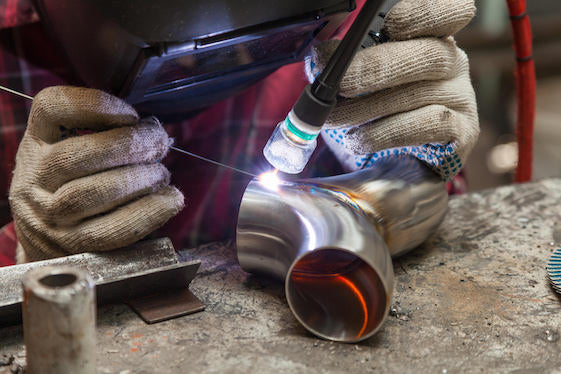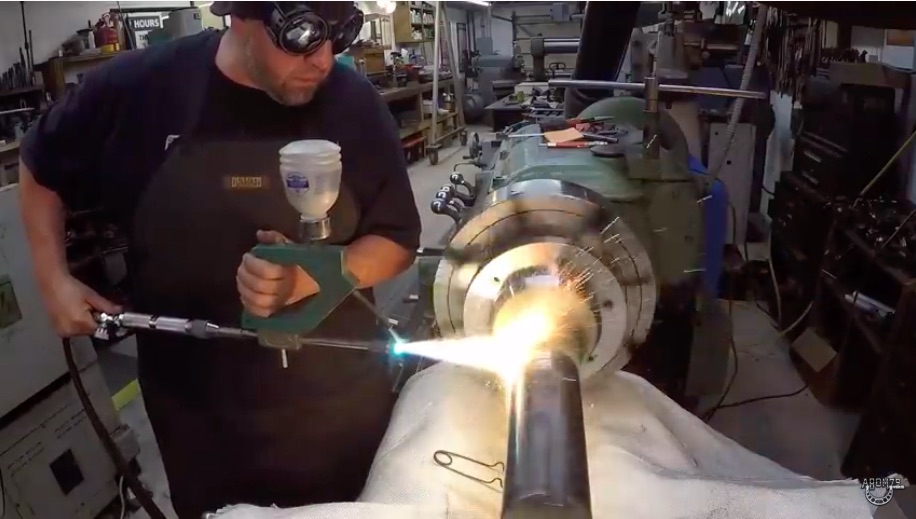All About Welding: Secret Insights Into Techniques and Finest Practices for Success
Welding incorporates a variety of methods, each matched for certain products and applications. Understanding these approaches, such as GMAW, SMAW, and TIG, is important for accomplishing suitable results. Moreover, the ideal devices and security methods can not be neglected. As prep work and repairing play critical roles in the welding procedure, understanding these elements can substantially boost the top quality of the end product. What are the essential variables that ensure an effective weld?
Comprehending Different Welding Strategies
Welding methods encompass a variety of approaches, each fit to certain applications and materials. Amongst one of the most common strategies are Gas Steel Arc Welding (GMAW), Secured Steel Arc Welding (SMAW), and Tungsten Inert Gas Welding (TIG) GMAW, likewise referred to as MIG welding, is preferred for its rate and flexibility, making it ideal for thin products. SMAW, or stick welding, is preferred for its simplicity and effectiveness in exterior environments, specifically with thicker steels. TIG welding offers accuracy and control, making it appropriate for elaborate work and non-ferrous steels (Belgrade Fabrication). Each strategy has its special advantages and considerations, enabling welders to pick the most effective method based upon the task's demands, material kind, and wanted outcomes. Recognizing these techniques is important for effective welding
Essential Welding Devices and Devices
While numerous welding techniques need specific skills, the best equipment and tools are just as necessary for achieving quality outcomes. Essential welding equipment consists of welding machines, which vary relying on the strategy-- such as MIG, TIG, or stick welding. Protective gear, including handwear covers, headgears, and aprons, warranties safety and security and comfort during the procedure. In addition, clamps and fixtures aid safeguard products in position, guaranteeing accuracy in welds. Consumables like welding poles, wire, and securing gas are also crucial parts that affect the top quality of the weld. In addition, devices such as grinders and cutters promote surface prep work and post-weld finishing, adding to a specialist end result. Investing in high-grade tools ultimately enhances the effectiveness and efficiency of welding projects.
Safety And Security Practices in Welding
Correct security practices are crucial in the welding sector to protect workers from possible threats. Welders have to wear appropriate personal safety devices (PPE), including safety helmets with correct shading, handwear covers, and flame-resistant garments. Ample air flow is vital to lower exposure to hazardous fumes and gases produced during the welding process. Furthermore, employees should be learnt the right handling of welding tools to stop accidents. Fire security actions, such as keeping combustible materials far from the welding location and having fire extinguishers easily offered, are necessary. Regular assessments of equipment and work areas can assist determine prospective risks prior to they lead to accidents. By adhering to these safety practices, welders can develop a much safer working setting and reduce threats connected with their trade.
Readying Products for Welding
Preparing products for welding is an essential action that significantly influences the top quality and honesty of the end product (Belgrade Fabrication). Proper preparation entails cleansing the surfaces to eliminate pollutants such as rust, dust, and oil, which can jeopardize the weld. Methods such as grinding, sanding, or making use of solvents are frequently utilized to attain a clean surface. Furthermore, ensuring that the materials mesh well is necessary; gaps can lead to weak welds. It's additionally vital to think about the alignment and positioning of the elements, as this will affect the convenience of welding and the last outcome. Picking the proper filler material and making sure compatibility with the base steels is essential for attaining solid, durable welds.
Tips for Achieving High-Quality Welds
Achieving premium welds needs attention to information and adherence to best practices throughout the welding procedure. Appropriate joint preparation is essential, making certain surface areas are totally free and clean from impurities. Picking the appropriate filler material and welding technique based on the base steels is essential for ideal bonding. Preserving regular traveling speed and angle while welding can promote and prevent flaws harmony. Furthermore, regulating warmth input is crucial; excessive warmth can lead to bending and compromised joints. On a regular basis checking the welds during the procedure allows for instant adjustments if required. Utilizing proper post-weld therapies, such as cleansing and stress and anxiety relief, can boost the resilience and stability of the weld, ultimately making certain a successful result.
Repairing Common Welding Issues
Welding commonly provides difficulties that can impact the high quality and stability of the end product. Typical issues such as porosity, irregular weld beads, and overheating can develop, each calling for particular fixing strategies. Comprehending these issues is necessary for welders to improve their skills and attain ideal outcomes.
Porosity Troubles Explained
Although porosity can frequently be forgotten, it remains a critical issue in welding that can endanger the stability of a finished product. Porosity refers to the existence of tiny gas pockets within the weld bead, which can compromise the joint and lead to premature failing. This issue typically emerges from pollutants, wetness, or incorrect protecting gas insurance coverage throughout the welding process. To minimize porosity, welders must confirm that the base materials are clean and completely dry, utilize ideal shielding gases, and keep regular welding specifications. Consistently evaluating the tools and environment can also assist determine prospective problems before they show up in the weld. Addressing porosity successfully is crucial for accomplishing strong, resilient welds that fulfill quality standards.

Inconsistent Weld Beans
Irregular weld beads can significantly influence the top quality and toughness of a completed item. Numerous variables add to this issue, consisting of improper travel speed, wrong amperage settings, and irregular electrode angles. When the welder moves as well swiftly, a grain might appear slim and do not have infiltration, while relocating also gradually can trigger extreme accumulation. In addition, making use of the wrong amperage can lead to either damaging or extreme spatter, both of which concession weld stability. The welder's technique, such as inconsistent torch activity, can likewise bring about uneven bead appearance. To alleviate these problems, welders need to concentrate on preserving steady, controlled movements and making certain correct equipment settings to attain harmony in their welds. Consistency is key to achieving dependable and solid welds.
Getting Too Hot and Warping Issues
Too much warm throughout the welding procedure can bring about considerable getting too hot and buckling issues, impacting the architectural integrity of the workpiece. These troubles often manifest as distortion, which can compromise placement and fit-up, making more setting up challenging. Variables contributing to overheating consist of the option of welding criteria, such as voltage and take a trip rate, along with the sort of material being welded. To alleviate these problems, welders must maintain regular traveling speed and proper warm input while checking the workpiece temperature. Additionally, preheating or post-weld warmth therapy can assist relieve tensions triggered by rapid look at this web-site air conditioning - Montana Mobile Welding and Repair. Normal examination and adherence to best techniques are essential in stopping overheating and ensuring the long life and integrity of bonded frameworks
Often Asked Inquiries
What Are the Profession Opportunities in the Welding Industry?
The welding industry provides diverse profession chances, including visit site settings as welders, examiners, engineers, and teachers. Experts can operate in production, building, aerospace, and automobile industries, benefiting from solid demand and affordable incomes in various roles.
Just How Can I Boost My Welding Speed Without Compromising Quality?
To boost welding rate without giving up quality, one must exercise efficient techniques, keep equipment, enhance setups, and improve hand-eye sychronisation. Normal training and looking for responses can additionally significantly add to accomplishing much faster, high-grade welds.
What Accreditations Are Offered for Welders?
Many accreditations exist for welders, consisting of those from the American Welding Society (AWS), the National Facility for Building Education And Learning and Study (NCCER), and numerous industry-specific click here to find out more companies. These credentials improve employability and demonstrate skill effectiveness.
Just How Does Welding Influence the Features of Metals?
Welding influences the properties of metals by changing their microstructure, which can cause adjustments in ductility, stamina, and solidity. Warm input and air conditioning prices during the procedure greatly influence these material characteristics.
Can I Bonded Dissimilar Metals With Each Other?
